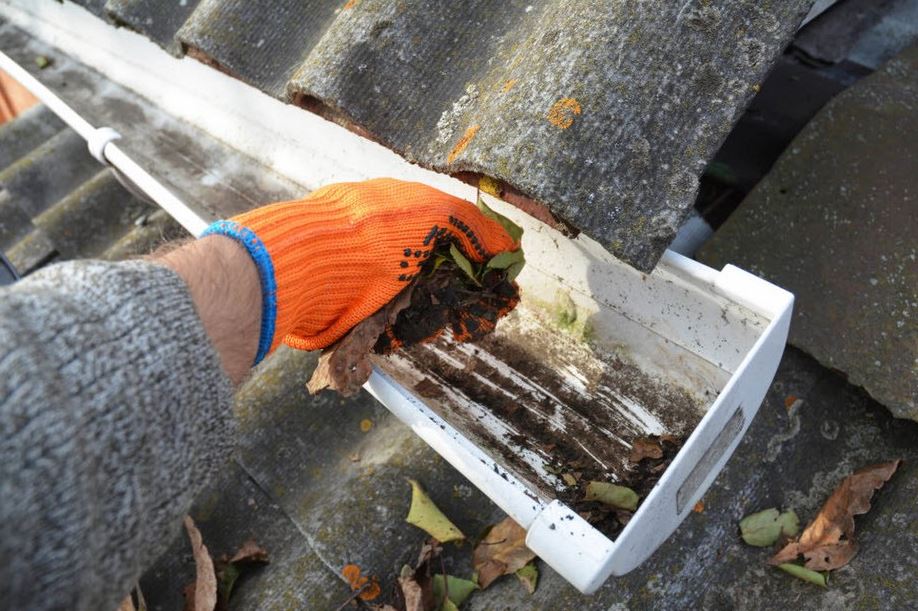
A leaky roof is a major problem that can cause a series of rapidly cascading home interior issues, from waterlogged attic insulation to ruined floors. Repairing a leaking roof is important to maintaining your home.
Leaky roof repair is a labor-intensive project that isn’t for everyone. But if you’re up to the task, it’s relatively inexpensive and has a significant payoff in preserving the value of your home.
When to Roof a House
Roofing companies can repair a house roof at nearly any time of year because they have sufficient labor and experience to adapt to the weather. As a do-it-yourselfer, choose the driest and warmest time of year since the roof deck may be exposed for a day or two. Visit Roof repair NJ here.
In most areas, this means fixing your leaky roof from late spring to mid- or late-summer and even into the fall. Check the immediate weather forecast before starting to seal your leaking roof.
Safety Considerations
Fixing a leaking roof is potentially hazardous. But with proper work practices, roofing repair can be a safe project. Always work with an assistant.
Avoid falls by never working on a wet, snowy or icy roof. Remove debris such as twigs, pine cones, leaves and moss. Wear soft-soled boots.
Use a Personal Fall Arrest System (PFAS) to slow and stop your fall off the side of the house. Or use a fixed Fall Restraint System to prevent yourself from reaching the unprotected edge of the roof.
Consult the comprehensive OSHA publication “Protecting Roofing Workers” for the full range of safety recommendations to keep you safe while sealing your leaking roof. Use all other personal protective devices, too, such as hearing and eye protection, gloves and a breathing mask.
- Locate the Roof Leak
Start at the lowest point in the roof leak, such as a ceiling stain, and work your way upward. Using a ladder and flashlight, access the attic and visually follow a vertical line up to the roof. The leak may begin a few feet higher up the roofline, toward the roof ridge. The leak’s location on the bottom of the roof deck may be stained black or white or may have mold or mildew,
Roof vents are a major source of roof leaks. Roof vents can include attic fans, turbines, plumbing soil stack pipes and any element with metal flashing that extends above the roofline. Or the roof leak’s source may be damaged plywood roof decking (also known as sheathing).
- Examine Roof Vents
If the leak stems from roof vents, return to the top of the roof and check on the condition of the vents. The housings or boots might have become cracked. The vents themselves may have become dislodged. Check for missing or dislodged nails holding the vents to the roof.
- Remove Damaged Roof Vent
From the top of the roof, remove the damaged roof vent. First, use the pry bar to pull out nails holding the shingles to the vent. Next, use the pry bar to pull back the shingles covering the base of the vent. It helps to have an assistant hold the shingles. Do not remove the shingles. Remove nails that hold the vent to the roof deck. Finally, remove the vent.
- Replace Roof Vent
Apply a thick bead of roofing cement or exterior sealant to the bottom of the vent’s flashing. Have the assistant gently roll back and separate the shingles as you slide in the vent.
The lower section of the vent flashing should ride over the shingles to prevent leakage. Nail down the vent at all corners and every 4 inches. Cover the nails with cement or sealant.
- Tear Off Old Roofing Shingles
If the leak is coming from damage to the roof deck, you’ll need to remove shingles to gain access to the damaged section.
Slide the pry bar under the shingles from the bottom upward (toward the roof ridge). Start about two rows of shingles above the intended repair point. Then, work downwards through the rows, progressively prying nails loose and pulling shingles away.
- Remove the Old Roofing Paper
Roofing paper or synthetic underlayment will separate the shingles from the roofing deck. Slice off the paper or underlayment with the utility knife. Keep as much intact as possible.
- Mark the Deck Cut Area
Snap a chalk line down the roof rafters on both the left and right sides of the damaged section of roof deck. Be sure to snap the line in the center of the rafters. Follow existing nails as a guide to the rafter center.
Then, snap a chalk line crossways or 90 degrees to the rafters both above and below the damaged section.



More Stories
Timber Dining Tables | Why They Should Be Your Number 1 Choice
How to Use Microwave with Oven Functions for Quick and Easy Cooking
Jersey Shore condo to Beach Townhouse Update